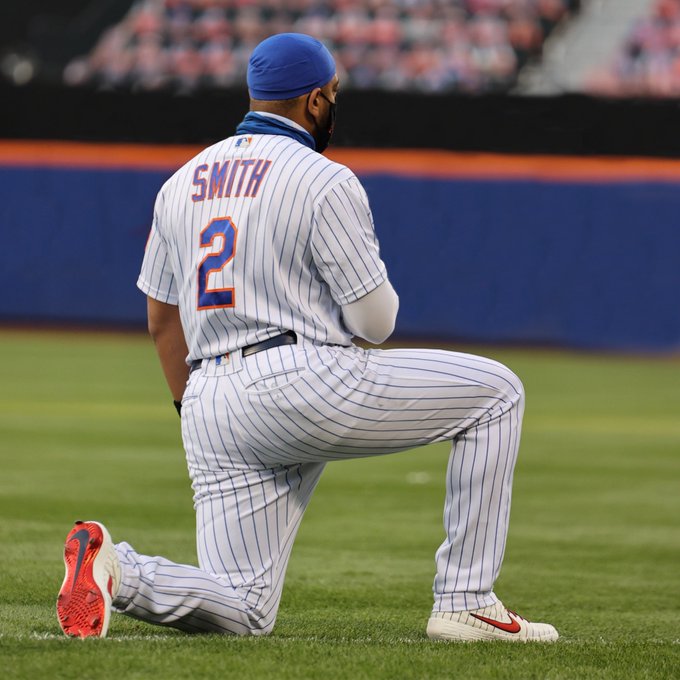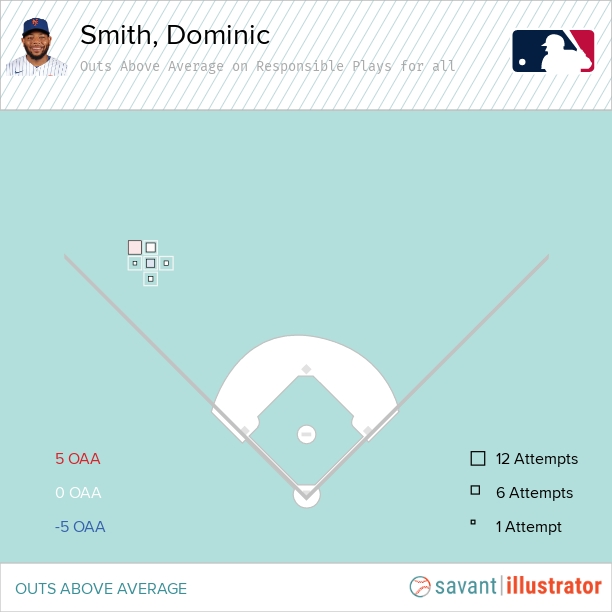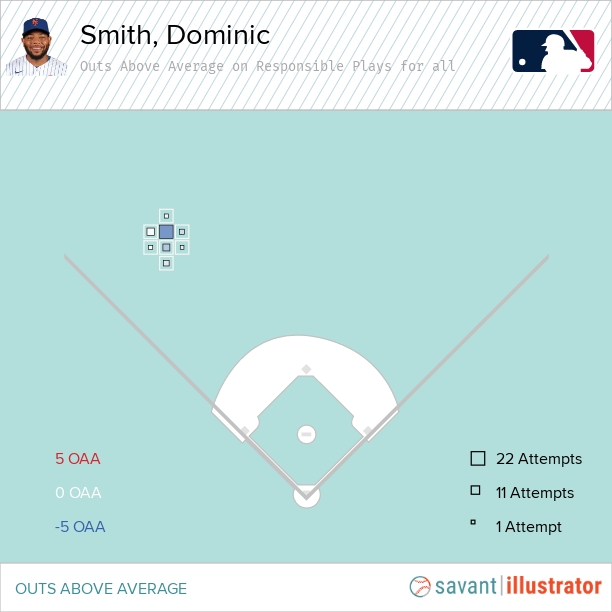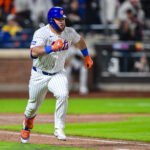
Coming off a disappointing 2020 campaign, the New York Mets must improve in several different areas to qualify for the playoffs for the first time since 2016, which will include dramatically improving their overall defense.
While acquiring shortstop Francisco Lindor is certainly a step in the right direction, as the two-time Gold Glove award winner should serve as a significant upgrade on the left side of the infield, his defensive impact won’t extend into the outfield. Since the front office didn’t land a reliable defensive outfielder over the offseason, there’s a very strong chance this team will continue struggling to perform effectively beyond the infield in 2021.
Digging deeper into this complicated situation, the lack of a universal designated hitter put the Mets and every other National League team in a very tough spot this winter, essentially handcuffing each of those organizations from filling out their respective rosters as originally planned.
With this in mind, president Sandy Alderson couldn’t make a serious run at someone like Jackie Bradley Jr. because he needed to leave an open spot in the outfield for slugger Dominic Smith.
After enjoying the top statistical performance of his career in 2020, where Smith produced career-highs in extra-base hits (32) RBIs (42), ISO (.299), BABIP (.368), wOBA (.412), wRC+ (164) and fWAR (1.8), the 25-year-old has quickly become a major part of this team’s lineup. As a result of his offensive progression, coach Luis Rojas and his staff will need to find a way to provide the left-handed slugger regular playing time throughout this season, which could become extremely difficult without the DH position.
As currently constructed, the Mets’ outfield is expected to feature Michael Conforto in right field, Brandon Nimmo in center field and Smith in left field. Considering the Mets outfield finished with the second-worst OAA (-10) last season (and that’s with the use of the universal DH), it’ll be crucial for them to prevent those defensive struggles from occurring for a second-straight campaign.
Despite bringing immense value to the lineup offensively, there isn’t that same level of confidence regarding the 26-year-old’s defense and his struggles in the outfield could potentially outweigh his stellar production in the batter’s box.
Unlike his development at the plate, the former top prospect has struggled mightily with his glove since making his major league debut in 2017 and must make multiple adjustments to his craft to succeed as a defender during his fifth season in Queens.

Photo from the Mets
Since the 2017 campaign, Smith has compiled just 470 1/3 innings in left field, committing four errors and creating a -9 OAA, -7 DRS, -3.5 RngR, -7.3 UZR and a -25.0 UZR/150.
In comparison, Nimmo, who’ll be playing center field out of necessity, has played 837 1/3 career innings in left field and has produced a 5 OAA, 5 DRS, 2.9 RngR, 3.0 UZR and a 4.6 UZR/150. Additionally, the 27-year-old has only committed a single error in left field since making his major league debut in 2016.
Though Nimmo would be better suited to become the everyday left fielder this season, he likely only be positioned on the left side of the outfield when Smith isn’t in the lineup or is removed during high-leverage situations. As a result, the speedy outfielder will need to focus on translating his success over to center field and finding a way to improve off his career -1 OAA at that spot.
As for Smith, improving his range and quickness in the outfield will be two of the biggest aspects he’ll need to work on throughout this season. Having said that, each of those traits have been major causes for his troubling defensive metrics and it certainly won’t be easy to correct those woes, especially since he’s been considered one of the slowest outfielders in the majors over the last few seasons.
If the former Junipero Serra HS product had qualified in 2019, he would’ve finished with the worst burst (-3.8 feet) and also would’ve covered the lowest amount of ground against the league average (-4.8 feet) among all qualified outfielders, according to BaseballSavant.com.
Then in 2020, the left-handed outfielder failed to qualify for the leaderboard once again, although he would’ve finished with the fifth-worst burst (-2.3 feet) and also would’ve tied for the eighth-lowest amount of ground covered against the league average (-2.6 feet).
Barring a dramatic adjustment from Smith, it seems his range, or lack of it, will probably become a major issue for him once again this season. But if the Mets were to locate him in the proper position, then the California native might be able to limit his ineffectiveness in left field, which would definitely be an encouraging solution.
While the offensive-first outfielder hasn’t enjoyed much success beyond the infield throughout his career, he’s performed much more effectively when positioned closer to the warning track, providing him a few extra seconds to read the ball off the bat. In addition, he’s also proven to be more effective when his starting position has been closer to foul territory, reducing the amount of ground he’s needed to cover to make each play.
Here’s how Smith has performed when he’s been located closer to the foul line in his career:

Source: BaseballSavant.com
And here’s how Smith has performed when he’s been positioned straight up:

Source: BaseballSavant.com
Based on these charts, it’s clear starting Smith deep in the outfield and closer to the foul line will probably put him in the best position to succeed as a defender in 2021. While moving the youngster towards the left field corner will likely prevent him from running balls down in the gap, placing a larger responsibility on Nimmo to roam from gap-to-gap should help counteract those types of plays.
Though this wouldn’t be a perfect solution, it’s one that could allow the Mets’ outfield to tread water and potentially perform respectively without weakening their lineup. With backup outfielders Kevin Pillar and Albert Almora Jr. slated to round out the club’s bench, either of them could serve as defensive replacements late in games, providing reliable defense during the biggest moments of each contest.
Since a universal DH is expected to be included in the new Collective Bargaining Agreement – the current one is set to expire after this season – moving Smith back to the outfield on a regular basis is something that’ll only have to happen in 2021. Once this season concludes, the emerging star can be moved back to the infield, allowing him to primarily focus on his defense at first base moving forward.
Until then, the Mets will be forced to become creative with how they manage all three outfield spots during the 2021 campaign, which is a task that’ll undoubtedly prove to be challenging at times for Rojas and his staff.















